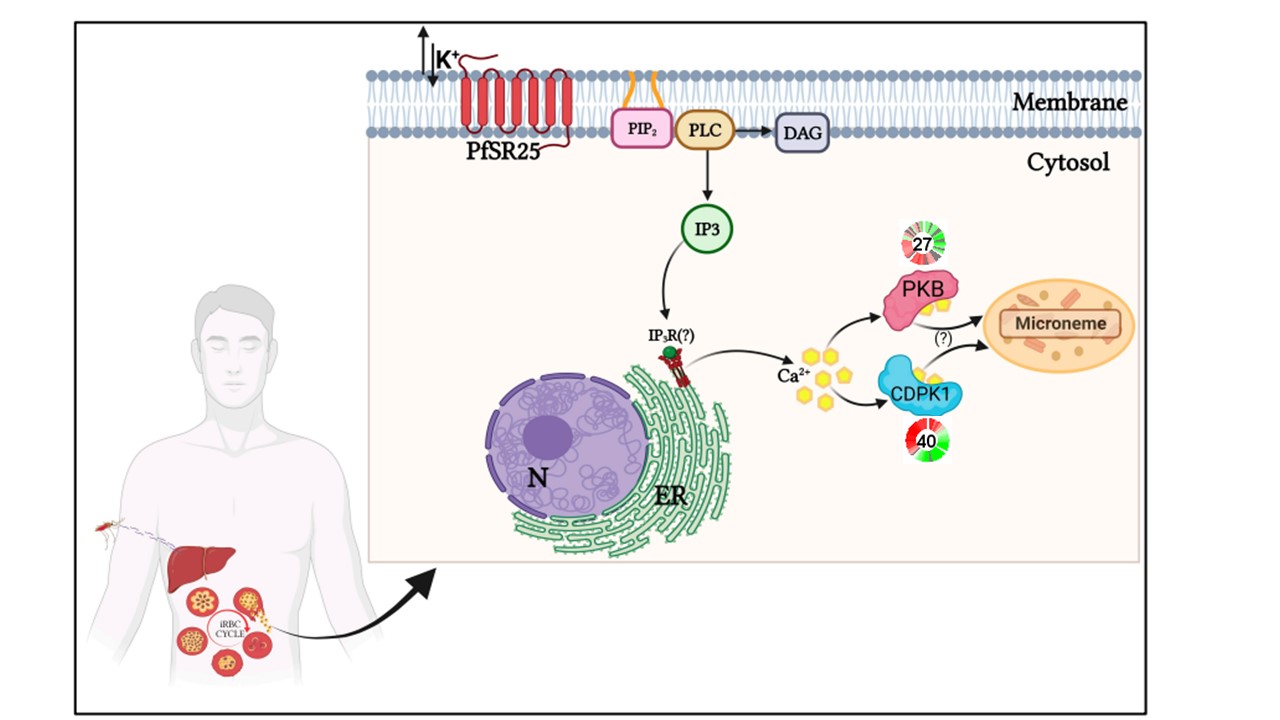Schematic representation of the signaling pathway involving K+ in Plasmodium spp. During its asexual developmental phases. In the erythrocytic stage, the exposure of P. falciparum to variations in [K+] is perceived by the GPCR-like PfSR25, which transmits the signal through the activation of phospholipase C (PLC). After PLC activation, inositol 1,4,5-triphosphate (IP3) and diacylglycerol (DAG) are formed. IP3 activates an IP3 receptor (hypothetical IP3R) to release calcium (Ca2+) from the endoplasmic reticulum (ER). The increase in cytosolic levels of Ca2+ activates the Ca2+-dependent protein kinases CDPK1 and PKB, leading to the release of microneme proteins essential for the infection of new erythrocytes.
Carucci M, Duez J, Tarning J, García-Barbazán I, Fricot-Monsinjon A, Sissoko A, Dumas L, Gamallo P, Beher B, Amireault P, Dussiot M, Dao M, Hull MV, McNamara CW, Roussel C, Ndour PA, Sanz LM, Gamo FJ, Buffet P. Safe drugs with high potential to block malaria transmission revealed by a spleen-mimetic screening. Nat Commun. 2023 (1):1951.
Other associated proteins
| PFID | Formal Annotation |
|---|---|
| PF3D7_0217500 | Calcium-dependent protein kinases; CDPK1 |
| PF3D7_0713400 | GPCR-like receptor sr25; serpentine receptor SR25 |
